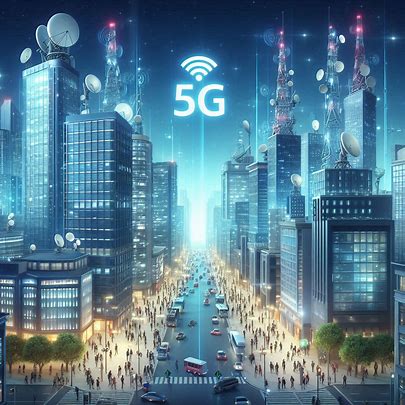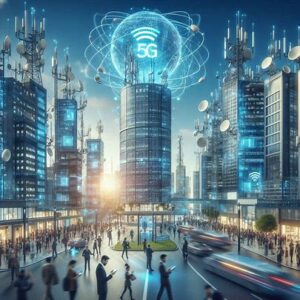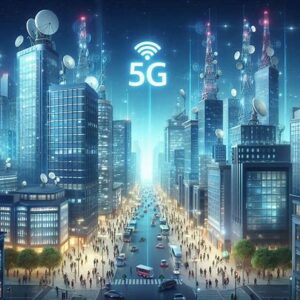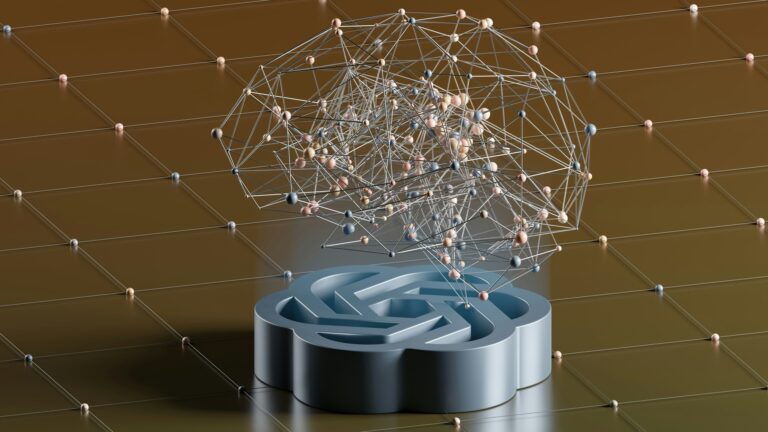
Introduction
Picture streaming a 4K movie in seconds, driving a car that communicates with traffic lights, or living in a city where everything from streetlights to waste management is optimized in real-time. This is the promise of 5G networks, the fifth generation of wireless technology that’s transforming how we connect. Offering blazing-fast speeds, ultra-low latency, and the ability to support millions of devices, 5G is more than just an upgrade from 4G—it’s a foundation for a smarter, more connected world. This article explores what 5G is, how it works, its real-world applications, current trends, and its potential to shape the future, all in an engaging and accessible way.
What is 5G Networks?
5G is the latest generation of mobile network technology, succeeding 4G. It delivers faster data speeds, lower latency (the time it takes for data to travel), and greater capacity to connect multiple devices simultaneously. Unlike its predecessors, 5G is designed to support not just smartphones but also a vast ecosystem of devices, from IoT sensors to autonomous vehicles.
Key Features of 5G Networks
- High Speed: 5G offers download speeds up to 10 Gbps, 10-100 times faster than 4G, enabling near-instant data transfers.
- Low Latency: With latency as low as 1 millisecond, 5G supports real-time applications like remote surgery or gaming.
- Massive Device Connectivity: 5G can handle up to a million devices per square kilometer, ideal for smart cities.
- Energy Efficiency: Optimized for low-power devices, extending battery life for IoT sensors.
For example, downloading a two-hour movie on 4G might take minutes, while 5G can do it in seconds.
How 5G Networks Works
5G networks use advanced technologies to achieve their performance. Here’s a simplified overview:
- Radio Waves: 5G uses a range of frequencies, including low-band (for wide coverage), mid-band (balancing speed and range), and high-band millimeter waves (for ultra-fast speeds in dense areas).
- Small Cells: Unlike 4G’s large cell towers, 5G relies on smaller, densely placed antennas to boost capacity and coverage in urban areas.
- Beamforming: 5G directs signals to specific devices rather than broadcasting broadly, improving efficiency.
- Network Slicing: 5G creates virtual networks tailored to specific needs, like one slice for gaming and another for IoT devices.
For instance, in a 5G-enabled stadium, fans can stream live replays without lag, while IoT sensors monitor crowd flow, all on the same network.

Real-World Applications of 5G Networks
5G’s capabilities are revolutionizing industries and enhancing daily life.
Smart Cities
5G enables smart city infrastructure, where connected devices optimize urban systems. In Singapore, 5G-powered traffic sensors reduce congestion by adjusting signals in real-time, while smart waste bins alert collection services when full.
Healthcare
5G supports telemedicine and remote surgeries by providing low-latency, high-quality video feeds. For example, doctors can use 5G to control robotic surgical tools remotely, improving access to specialized care in rural areas.
Autonomous Vehicles
Self-driving cars rely on 5G’s low latency to communicate with each other and infrastructure, like traffic lights or road sensors. Companies like Tesla and Waymo are leveraging 5G to enhance vehicle safety and navigation.
Entertainment and Gaming
5G transforms entertainment by enabling seamless streaming and immersive experiences. Cloud gaming platforms like Xbox Cloud Gaming use 5G to deliver console-quality games to mobile devices without lag. AR/VR experiences, such as virtual concerts, also benefit from 5G’s speed.
Industry and Manufacturing
In Industry 4.0,5G Networks connects factory machines, robots, and sensors for real-time monitoring and automation. For example, Bosch uses 5G in smart factories to coordinate robots, reducing downtime and boosting efficiency.
Current Trends in 5G
As of June 2025, 5G is expanding globally, with new advancements shaping its adoption. Here are key trends:
Global Rollout Expansion
5G coverage is growing, with over 100 countries deploying networks. Rural and underserved areas are gaining access through low-band 5G, while urban centers use high-band for maximum performance.
Private 5G Networks
Businesses are adopting private 5G networks for secure, tailored connectivity. Airports, for instance, use private 5G to manage operations, from baggage handling to air traffic control, without relying on public networks.
5G and IoT Integration
5G’s ability to connect millions of devices is fueling the Internet of Things (IoT). Smart homes, wearables, and industrial sensors benefit from 5G’s low power and high capacity, enabling seamless data exchange.
Edge Computing Synergy
5G pairs with edge computing to process data closer to devices, reducing latency. This is critical for applications like autonomous drones, where real-time decisions are vital. Companies like AWS offer 5G-edge solutions.
Enhanced Security
With 5G’s growth, cybersecurity is a priority. New encryption standards and AI-driven threat detection are being integrated to protect networks, especially for critical infrastructure like power grids.
5G Networks-Advanced
The next phase, 5G-Advanced, is emerging with even faster speeds and lower latency. It supports advanced use cases like holographic communication and massive IoT deployments, expected to mature by 2027.
Benefits of 5G Networks
5G offers transformative advantages:
- Speed and Efficiency: Faster downloads and uploads enhance productivity and entertainment.
- Reliability: Low latency ensures consistent performance for critical applications.
- Scalability: Supports a growing number of connected devices, from phones to IoT sensors.
- Economic Growth: 5G is projected to add trillions to the global economy by enabling new industries.
- Innovation: Fuels advancements in AI, IoT, and AR/VR, creating new opportunities.

Challenges of 5G Networks
Despite its potential, 5G faces obstacles:
- Infrastructure Costs: Deploying small cells and upgrading networks is expensive, slowing rollout in some regions.
- Coverage Gaps: High-band 5G struggles in rural areas due to its short range, requiring hybrid solutions.
- Health Concerns: Misinformation about 5G’s safety persists, though studies confirm it poses no significant health risks.
- Security Risks: The vast number of connected devices increases cybersecurity vulnerabilities.
- Digital Divide: Uneven access to 5G could widen inequalities between urban and rural areas.
Addressing these requires investment, public education, and global cooperation.
The Future of 5G Networks
5G is set to redefine connectivity by 2030, with profound impacts:
- Smart Ecosystems: Fully connected cities will optimize energy, transportation, and public services.
- Healthcare Access: 5G will expand telemedicine, bringing expert care to remote regions.
- Immersive Technologies: Enhanced AR/VR and holographic communication will transform work and entertainment.
- Sustainability: 5G-enabled systems will reduce energy waste, supporting climate goals.
Continued investment in infrastructure and skills will ensure 5G’s benefits reach everyone.
Conclusion
5G networks are more than a faster version of 4G—they’re a catalyst for a connected, intelligent future. From smart cities and autonomous vehicles to immersive entertainment and advanced healthcare, 5G’s applications are vast and transformative. As trends like 5G-Advanced, IoT integration, and edge computing drive its evolution, the technology promises to enhance efficiency, innovation, and quality of life. By overcoming challenges like cost and coverage, 5G can create a world where connectivity empowers individuals and societies alike.




neykqwgqvipwohmvlzvqnhmegjsioy